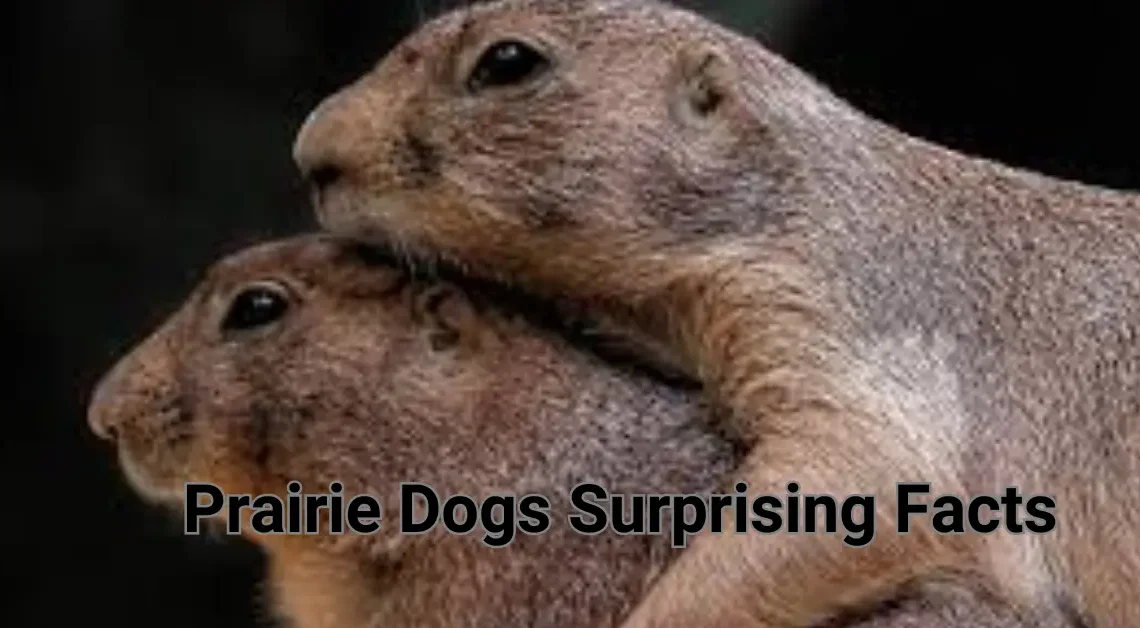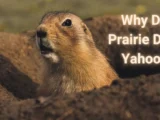
Prairie Dogs Surprising Facts
Welcome to the amazing world of prairie dogs! These small, furry creatures might seem unassuming, but they play a crucial role in the grasslands of North America. As a keystone species, prairie dogs are essential for maintaining the health of their ecosystem. Their burrowing activities aerate the soil, making it more fertile for plants to grow. This, in turn, supports a diverse range of wildlife, from insects to birds of prey. Prairie dogs also serve as food for many predators, helping to balance the delicate web of life on the prairie. Understanding prairie dogs and their behaviors is not only intriguing but also vital for preserving the delicate balance of these grassland habitats. So, let’s go into the world of prairie dogs and see why they’re such an important part of our natural world and uncover Prairie dogs surprising facts along the way.
Fascinating Prairie Dogs Facts
Prairie dogs, often hailed as the unsung heroes of the grasslands, play a vital role in their ecosystem. These small, stout rodents belong to the same family as squirrels and are primarily found in the grasslands of North America. Their habitats range from the central and western United States to parts of Mexico and Canada.
Prairie Dogs: Nature’s Architects
Prairie dogs may seem like ordinary rodents, but they play a crucial role in their ecosystem as keystone species. Picture them as the architects of the prairie, shaping the landscape in ways that benefit countless other animals and plants.
Their burrowing activities are the cornerstone of their importance. These underground architects dig extensive networks of tunnels, creating homes for themselves and their families. But their impact goes far beyond mere shelter. As they burrow, they aerate the soil, allowing oxygen to reach deep down and promoting healthy soil quality. This aeration also helps water to penetrate the ground more easily, reducing runoff and erosion.
Moreover, prairie dog burrows provide refuge and nesting sites for a variety of other species, from burrowing owls to snakes. By creating these underground havens, prairie dogs support a diverse community of wildlife, contributing to the overall biodiversity of the prairie ecosystem.
The prairie dog’s habitat is vast, stretching across the grasslands of North America. Their presence is felt not just in the physical landscape but in the intricate web of life that thrives around them. Without them, the delicate balance of the prairie ecosystem would be disrupted.
Unique Traits of Prairie Dogs
Prairie dogs have some really cool habits that make them interesting. Let’s go inside their world and find out what makes them unique.
Social Structure:
Prairie dogs are super social animals. They live in communities called “towns” and work together to build elaborate underground burrow systems. These towns can be home to thousands of prairie dogs, and they even have different sections for nurseries, bedrooms, and bathrooms!
Mating Habits:
When it comes to love, prairie dogs are quite romantic. They form strong pair bonds and often mate for life. During mating season, the prairie dogs put on quite a show with their playful antics and affectionate gestures.
Communication:
Prairie dogs are excellent communicators. They use a complex system of barks, chirps, and squeaks to convey messages to each other. It’s like they have their own language! They warn each other about predators, coordinate food gathering, and even gossip about their neighbors.
Conservation Challenges Facing Prairie Dogs
Let’s talk about some of the big challenges facing our furry friends, the prairie dogs, and what we’re doing to help them out.
Threats to Prairie Dogs:
Prairie dogs face a bunch of tough hurdles that put them at risk. One major problem is habitat loss. As human development spreads, the grasslands where prairie dogs live get taken over for things like farming and urban areas. This means less space for prairie dogs to build their burrows and find food.
Another big issue is disease. Prairie dogs can catch diseases from other animals, like plague, which can spread quickly through their communities and wipe out large numbers of them. It’s a serious threat to their populations.
And then there are human activities. Sometimes, people see prairie dogs as pests and try to get rid of them. They might use poisons or bulldoze their burrows, which can be really harmful to the prairie dog colonies.
Conservation Efforts:
But it’s not all bad news! There are lots of folks working hard to protect prairie dogs and keep them safe.
One way we’re helping is by setting aside special areas of land called conservation reserves. These are places where prairie dogs can live without worrying about being disturbed by human activities. By protecting their habitats, we’re giving them a better chance to thrive.
Scientists and wildlife experts are also studying prairie dogs to learn more about how to keep them healthy. They’re working on ways to prevent diseases from spreading and finding ways to restore habitats that have been damaged.
Geographic Distribution of Prairie Dogs
Prairie dogs are primarily found in the grasslands of North America. They inhabit various regions across the United States, particularly in the central and western parts, including states like Texas, Oklahoma, Kansas, Colorado, and Montana. These areas provide the open grasslands and prairies that prairie dogs prefer for their habitat.
There are several species of prairie dogs, each with its own specific range. For example, the black-tailed prairie dog is found in the central and western regions of North America, while the white-tailed prairie dog is more common in the northern Great Plains. Other species include the Gunnison’s prairie dog and the Mexican prairie dog, each occupying different parts of the continent.
These prairie dogs build their intricate burrow systems in the open grasslands, where they can easily forage for food and keep watch for predators. Their habitats are crucial for maintaining the health of the grassland ecosystem, as their burrowing activities aerate the soil and create habitat for other animals.
Overall, prairie dogs play a vital role in the ecosystem of North American grasslands, and understanding their geographic distribution helps us appreciate their importance in these unique habitats.
Interactions with Other Species
When it comes to interactions with other species, prairie dogs play a big role in the ecosystem. They’re not just cute rodents digging burrows; they’re like the architects of a bustling neighborhood.
First off, let’s talk about predators. Prairie dogs have a lot of them, from coyotes to hawks. These predators rely on prairie dogs for food, making them an essential part of the food chain. Without prairie dogs, these predators would struggle to find their next meal.
On the flip side, prairie dogs also have their own predators to watch out for. Coyotes are their main threat on land, while hawks and eagles swoop down from the sky. It’s a constant game of survival for these little critters.
But it’s not all about being dinner for someone else. Prairie dogs also play a crucial role in supporting other wildlife populations. Their burrows provide shelter for a variety of animals, including rabbits, snakes, and even some insects. It’s like they’re running a wildlife Airbnb out there!
So, why does all this matter? Well, think of prairie dogs as the glue holding everything together. Without them, the ecosystem would be out of balance. That’s why it’s important to protect prairie dog populations and their habitats.
Final Words about Prairie Dogs
Before we end our look at prairie dogs, let’s go over what we’ve learned. These small, furry creatures might seem insignificant at first glance, but they play a crucial role in our ecosystem. From their extensive burrowing activities to their complex social structures, prairie dogs are truly remarkable animals.
It’s important to understand how important role that prairie dogs play in maintaining healthy ecosystems. Their burrows aerate the soil, making it fertile for plant growth, and their grazing habits help control vegetation, which in turn benefits a variety of other species.
As we come to an end, I want you to take a moment to appreciate these interesting animals and the important part they play in our world. There are many ways to learn more about prairie dogs and respect their world, such as by helping with conservation efforts or just by reading more about them.
Also read here:
Why Do Prairie Dogs Yahoo? Exploring Unusual Pets’ Love


